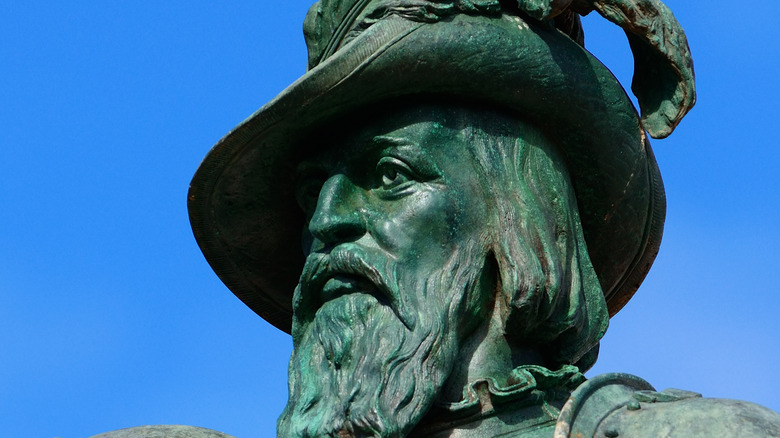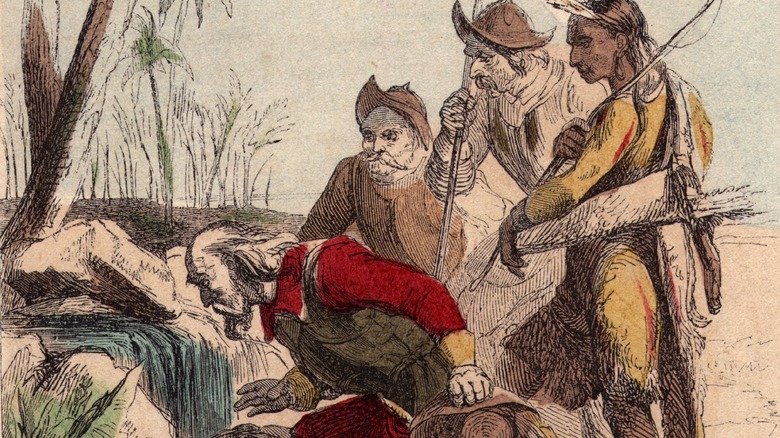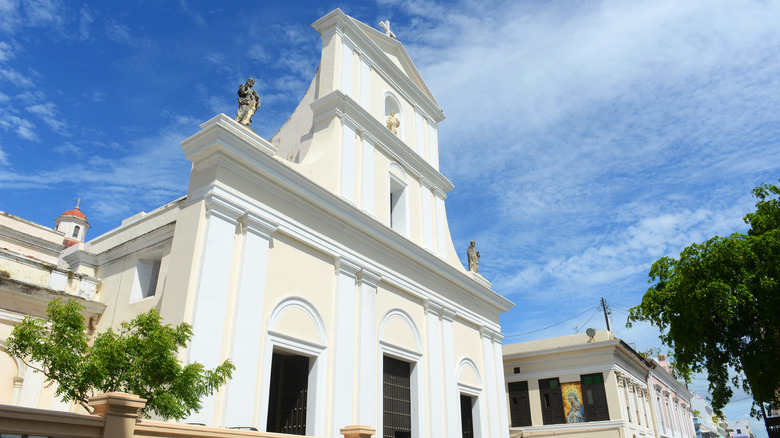The Tragic Death Of Ponce De León
You might remember studying Juan Ponce de León in grammar school — he's the one who explored Mexico and Florida in the 16th century for Spain. Ponce de León is often associated with looking for the Fountain of Youth, although evidence indicates his alleged quest came from a mix of less than accurate sources, including author Washington Irving, who in 1831 published a fictional account of Ponce de León and his search.
But Ponce de León did more than navigate new lands. He spent time as a governor, a soldier, and a conquistador. He also colonized the areas he voyaged to, often shedding blood along the way.
For his first journey to the New World, it is thought he accompanied Christopher Columbus on that explorer's second tour of the West Indies in 1493, according to History. Sometime after this trip, Ponce de León ended up in Hispaniola, a Spanish colony located in the Caribbean (now Haiti and the Dominican Republic). A local tribe, the Taino people, resentful of the Spanish presence and the rules forced upon them, revolted, killing most of the soldiers stationed in a Spanish outpost in Higüey in 1504.
An explorer brings death and glory
Ponce de León oversaw a force of several hundred Spanish soldiers to stem the violence; instead, the fight escalated and became a massacre. His handling of the situation garnered him respect and favor, according to Totally History. As a reward he was appointed governor of part of Hispaniola, and he enslaved the Taíno people, making them laborers for farming and mining.
Ponce de León next went to San Juan Bautista (now Puerto Rico) in 1508, in search of the fortune in gold he had heard rumors about; instead, he started a settlement in San Juan (then called Caparra). When supplies became low, he returned to Hispaniola, where he was appointed governor of Puerto Rico. He followed the path he pursued in Higüey, and continued enslaving the natives, according to Britannica. Anyone fortune enough to remain free was forced to give crops and gold to Spain. Many also were pressured to give up their culture and embrace Christianity.
The Tainos rebelled in 1511 and Ponce de León and his forces brutally pushed the revolt down, said the Puerto Rican Association of Washington State. Ponce de León also feuded with Diego Colón, the son of Christopher Columbus, over the governorship of Puerto Rico for several years, ultimately losing the position in late 1511.
Ponce de León's final resting place
The King of Spain offered Ponce de León another opportunity, asking him to look for more lands to conquer. Ponce de León set off in March 1513, with three ships and more than 200 men, according to Biography. They landed in Florida, at first thinking the place was an island, when in fact it was a peninsula. Ponce de León explored its coastline before returning to Puerto Rico in 1514.
His second trip to Florida in 1521 was intended to colonize the area. But, in February, natives attacked his party and he sustained an injury when a poison-tipped arrow pierced his thigh, according to History Central.
His group returned to Havana, Cuba, where he died from his wounds sometime in July 1521. Although he was buried in Puerto Rico's Church of San Jose, Ponce de León's remains were moved in 1908, said Visions of Travel, to a marble tomb at the Catedral de San Juan Bautista (pictured above) in what is now called Old San Juan.


